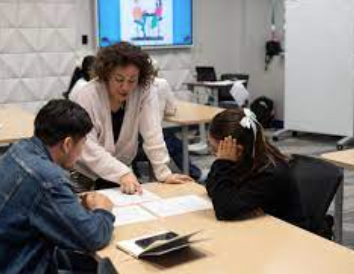Learning a new language can be a rewarding journey, and one of the most effective ways to become fluent is to start thinking in that language. When your thoughts naturally flow in the language you’re learning, it becomes easier to speak, understand, and connect with others. Here’s how you can gradually train your mind to think in a new language.
1. Start with Simple Words and Phrases
Begin by labeling your everyday surroundings in the language you’re learning. Use sticky notes or flashcards to name items like “door,” “table,” “mirror,” and “phone.” As these words become familiar, your brain will start to recall them automatically during your daily routine.
2. Narrate Your Day Internally
Try describing your actions to yourself in the target language. Whether you’re brushing your teeth, making tea, or heading out for a walk, think about what you’re doing in simple sentences. For example, say to yourself, “I am walking to the store” or “I am opening the fridge.”
3. Use a Language Journal
Keep a small journal where you write short entries in the language you’re learning. These can be about your day, thoughts, or plans. Even a few sentences a day can help you start forming ideas in your target language without translating from your native one.
4. Practice with Visual Prompts
Use pictures, videos, or real-life scenes to describe what you see in the target language. This helps your brain associate ideas directly with words instead of translating from your native language. For instance, look at a street scene and describe it aloud in the language you’re learning.
5. Think in Chunks, Not Individual Words
Instead of translating word by word, focus on learning common phrases and expressions. Phrases like “I don’t know,” “Can I help you?” or “Let’s go!” help your brain build speech patterns that flow naturally.
6. Talk to Yourself
Even if no one else around speaks the language, talking to yourself can boost fluency. Say what you’re thinking or describe your surroundings out loud or in your mind. This builds confidence and helps reinforce vocabulary.
7. Use Immersive Tools
Switch the language settings on your phone, apps, or social media. The more you interact with the language in a real-life context, the easier it becomes to think in it. Listening to podcasts, watching shows, or reading in the target language also helps build a deeper connection.
8. Be Patient and Consistent
Thinking in a new language doesn’t happen overnight. It takes time, repetition, and gentle encouragement. Be kind to yourself and celebrate small wins, like forming your first full thought without translating.
Conclusion
Training your brain to think in another language is a gradual but powerful step toward fluency. By making small changes in your daily habits and creating a consistent language environment, you’ll find yourself thinking—and even dreaming—in your new language. Enjoy the journey and stay curious!


